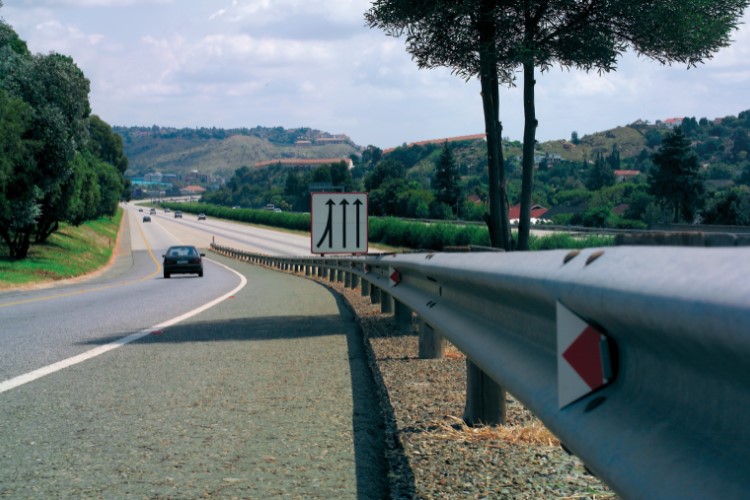Highway barriers are essential road-safety devices. Such rails can be placed in the median of two opposing highway carriageways to separate the fast-moving traffic of the two opposing fast lanes. The rails thus prevent the fast-moving vehicles of one from straying into oncoming traffic of the other. As such, median rails help to prevent fatal accidents. Highway barriers also serve to prevent or discourage pedestrians from crossing the freeway. Vehicles move at speeds of 120 km/h and even faster on such roads. Slow-moving pedestrians cannot always accurately judge the speed of oncoming traffic when they try to cross multiple lanes and they are at risk of being hit. Of course, pedestrians are, by law, not allowed to be on a highway.
If a vehicle hits any type of obstacle, including a human or animal, at highway cruising speeds, it can be devastating for the vehicle occupants. Damage to the vehicle is a given when colliding with something or someone at high speed. Add to this the risk posed to other road users when a motorist tries to avoid a collision with the pedestrian and it becomes clear why highway barriers are needed. Should the vehicle swerve into another lane in order to avoid the collision, it can cause an accident. With trucks, buses, passenger vehicles, and motorcycles all using the freeways, it is essential to have rails to protect the road users from having to deal with illegal pedestrians moving into unsafe spaces. Highway barriers are also installed on the grass medians between opposing lanes to prevent motorists from making U-turns into the oncoming fast lane. Such dangerous actions can lead to serious accidents and chain reactions involving several vehicles.
Given the speed of travel and the importance of preventing pedestrians from crossing (and vehicles from moving into opposing lanes), it is evident that the highway barriers must be strong enough to prevent breakthrough. The rails must also be high enough to prevent vehicles with a high ground clearance from catapulting through or over the rails at high speed. Another prerequisite is that the rails must be able to withstand the effects of the elements for many years on end. Low cost of maintenance is imperative too, as are minimal maintenance requirements. Any work done on a freeway poses a risk to the road users and workers. Accident risks increase substantially with such roadworks or maintenance in progress and it is thus imperative that the barriers be durable and easily replaceable in case of extensive damage.
Highway barriers also redirect vehicles back into their original safe path of travel upon side impacts, so these rails must have redirection capability. Concrete barriers, for instance, have slide-angle slopes at the bottom. If a vehicle impacts the barrier along its length, the wheels move up the slope, causing the vehicle to be pushed back into its path. With W-beam guardrails, the entire system acts to redirect a vehicle upon impact. Wire-rope fences’ tensile strength, thanks to their cables suspended between poles, allow for redirection upon side impact. The wire-rope systems are suitable for installation on freeways where space is limited. The wire-rope system takes up little surface area and can thus also be used to demarcate emergency lanes.
W-beam rails are frequently installed at off-ramps, especially where tollbooths are present. Such rails prevent motorists from crossing the grass islands at the side of the freeways in order to circumvent tollbooths or to get back onto the highway after having taken the wrong off-ramp. The rails are also installed on bridges over other roads to prevent straying vehicles from vaulting over the side of the bridge into traffic below. Correct installation is imperative to ensure the effectiveness of the rails. It is also important to install well-tested and approved rails suitable for the particular road. Factors to consider include the rail’s placement to prevent it from becoming more of a hazard than a help on the particular road. In addition, the space available must be considered. The types of road users and the potential risks, such as pedestrians or animals crossing, must be considered.
It is best to discuss the types of highway barriers and installation guidelines with their manufacturers. Download our road-safety product brochure for more information about our products and call us for quotes or help in choosing application-appropriate road-safety products.

